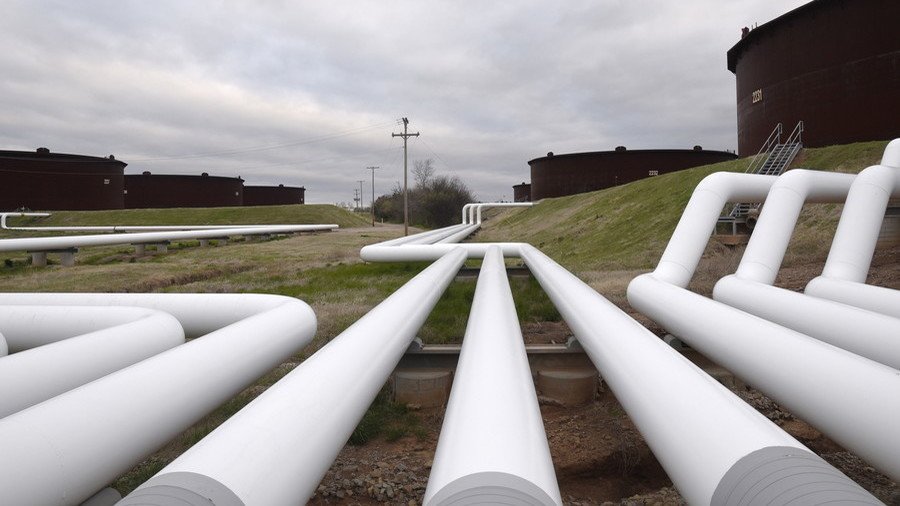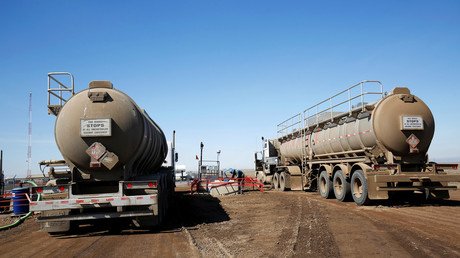The inevitable oil supply crunch

“The warning signs are there – the industry isn’t finding enough oil.” That’s the start of a new report from Wood Mackenzie.
The report concludes that a supply gap could emerge in the mid-2020s as demand rises at a time when too few new sources of supply are coming online.
By 2030, there could be a supply shortfall on the order of 3 million barrels per day (mb/d), WoodMac argues. By 2035, it balloons to 7 mb/d, and by 2040, it reaches 12 mb/d. “Barring technology breakthrough beyond what we already assume, we’ll need new oil discoveries,” the report says.
The seeds of the problem were sown during the oil market downturn that began in 2014. Global upstream exploration spending plunged from $60 billion in 2014 to just $25 billion in 2018, according to WoodMac. Unsurprisingly, that translated into a steep decline in new discoveries. In the early part of this decade, the oil industry was discovering around 8 billion barrels of oil annually. That figure has plunged by three quarters since 2014.
The precise figures vary, but Rystad Energy came a similar conclusion, noting that the total volume of new oil and gas reserves discovered plunged to a record low in 2017. “We haven’t seen anything like this since the 1940s,” Sonia Mladá Passos, Senior Analyst at Rystad Energy, said in a December 2017 statement. “The most worrisome is the fact that the reserve replacement ratio in the current year reached only 11 percent (for oil and gas combined) - compared to over 50 percent in 2012.”
This year, the industry has had a bit more success. Spending is on the rebound and new discoveries are on track to rise by about 30 percent, although that is heavily influenced by the developments in Guyana, where ExxonMobil and Hess Corp. have reported nearly a dozen discoveries, and hope to ramp up production to around 750,000 bpd by 2025.
It still may not be enough. Even if the industry were to somehow return to the good ol’ days prior to the 2014 market crash, and begin discovering around 8 billion barrels of oil each year, it would only delay the supply crunch into the 2030s, according to WoodMac.
But, of course, that rate of discovery remains far below those levels, so the supply crunch may take place much sooner. Moreover, because large-scale projects take several years to develop, the activity taking place today will determine the supply mix in the mid- to late-2020s.
WoodMac says that the rate of discovery is highly correlated with the level of spending, so closing the supply gap will require more capital. And because of the run up in oil prices this year, the industry will have a lot more cash to throw around.
The problem for the industry is that over the last few years the mindset, and the demands of shareholders, have shifted from production growth to profitability and investor returns. Shareholders are pressuring executives to return cash in the form of dividends and share buybacks. Energy stocks are not the darlings of Wall Street in the way they once were, particularly prior to the 2014 market meltdown. That puts extra pressure on oil and gas companies to dish out more of their earnings to investors rather than plowing it back into the ground.
But that means less spending on exploration. “The mind set for most E&Ps is still to be conservative, and default is to return capital to shareholders. Yet the duty to shareholders' interests cannot be myopically short term. More of the ‘windfall’ cash needs to find its way into exploration to sustain the business in the long term,” WoodMac said in its report.
Shale output will continue to grow, especially after new pipelines come online in Texas, which will ease the current bottleneck. But the large-scale increases in production in the medium-term will come from “frontier areas,” WoodMac says, as the string of discoveries in Guyana prove. WoodMac says the areas with the highest potential include “Suriname, the Brazilian Equatorial Margin; Mexico; Senegal, Gambia, Namibia and South Africa; Australia…and Alaska.”
For now, the level of activity is not enough to stave off the supply crunch, WoodMac warns, unless there is a dramatic increase in spending. “More explorers need to get in on the action if the spectre of ‘peak supply’ is to be kept at bay,” the consultancy says.
This article was originally published on Oilprice.com
















